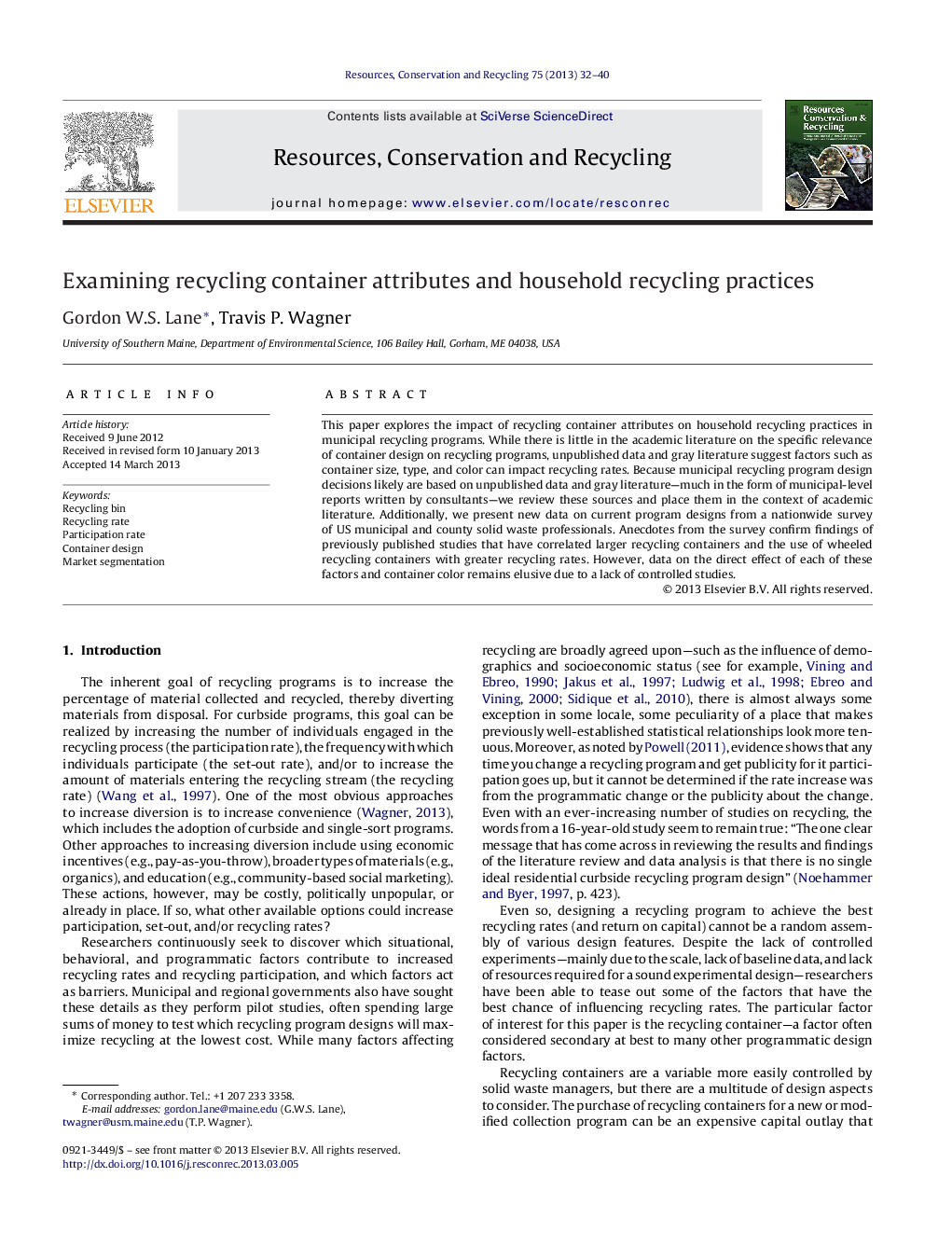| Article ID | Journal | Published Year | Pages | File Type |
|---|---|---|---|---|
| 1063182 | Resources, Conservation and Recycling | 2013 | 9 Pages |
•Analyses of recycling programs provide contradictory results.•Larger recycling carts may increase recycling rates.•Smaller municipal areas tend to use 18 gallon bins.•Smaller cities are more likely to provide recycling containers to apartments.•Pilot programs provide a unique opportunity for researchers.
This paper explores the impact of recycling container attributes on household recycling practices in municipal recycling programs. While there is little in the academic literature on the specific relevance of container design on recycling programs, unpublished data and gray literature suggest factors such as container size, type, and color can impact recycling rates. Because municipal recycling program design decisions likely are based on unpublished data and gray literature—much in the form of municipal-level reports written by consultants—we review these sources and place them in the context of academic literature. Additionally, we present new data on current program designs from a nationwide survey of US municipal and county solid waste professionals. Anecdotes from the survey confirm findings of previously published studies that have correlated larger recycling containers and the use of wheeled recycling containers with greater recycling rates. However, data on the direct effect of each of these factors and container color remains elusive due to a lack of controlled studies.
